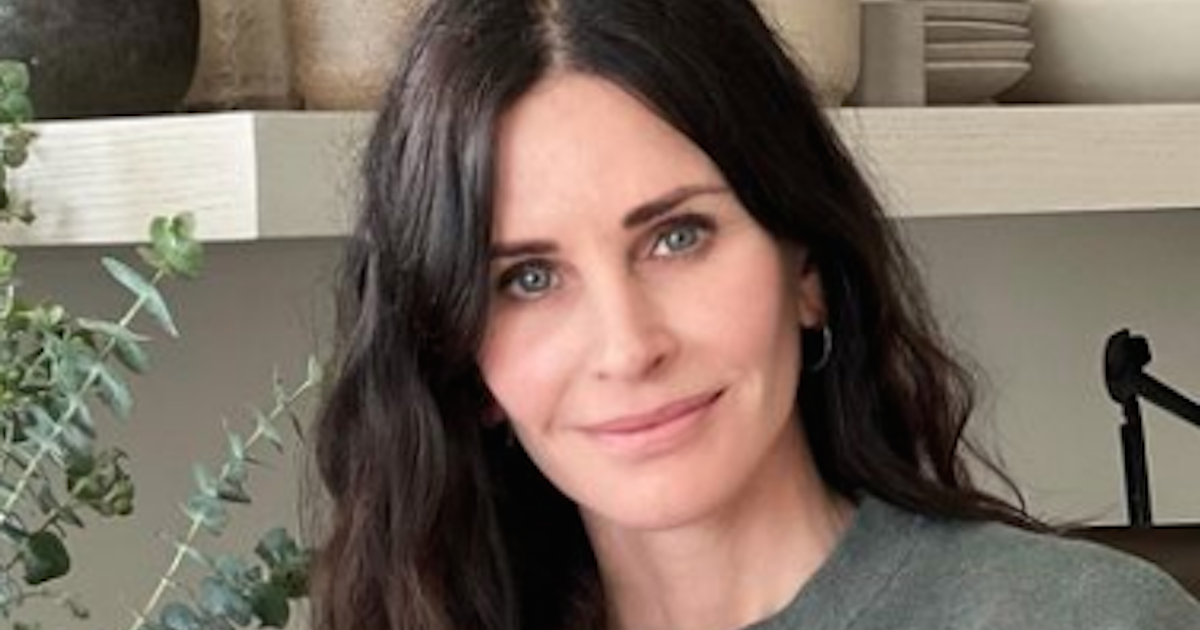Understanding Dermal Fillers
- Celebrities like Blac Chyna and Courtney Cox have decided to remove their fillers, making some people wonder what are the risks associated with dermal fillers.
- New York Cosmetic Skin & Laser Surgery Center’s Dr. Cameron K. Rokhsar says, “Facial fillers are substances that are injected into the skin to smooth wrinkles and make them less noticeable. They can also be used to add volume to hollow areas and enhance facial features.”
- There is currently no evidence to suggest that facial fillers come with a risk of cancer, according to dermatologists
- However, it’s important to remember that there may be other risks that come along with fillers, which can be minimized by going to a board-certified dermatologist with experience in using the product.
Cox, 58, known for her leading role as Monica Geller on the sitcom “Friends,” recently admitted that she excessively used fillers and had the feeling of always needing more done to her face.
More On Lowering Cancer Risk
- Researchers Say Diet & Lifestyle Factors Are to Blame for Dramatic Increase in Cancers in Adults Under 50; How Can You Lower Your Cancer Risk?
- Alcohol Consumption Increases Cancer Risk. Less Booze Is Associated With Lower Cancer Risk, New Data Adds To The Case For Moderation
- A New Recommendation Adds To The List Of Drugs That Can Lower Breast Cancer Risk For Women With High Risk Of Developing The Disease
- New Hope For Early Stage Non-Small Cell Lung Cancer Patients: Immunotherapy After Surgery Lowers Risk of Recurrence
In a previous interview with the Sunday Times, Cox explained, “There was a time when you go, 'Oh, I'm changing. I'm looking older.’ And I tried to chase that youthfulness for years. And I didn't realize that, oh, s, I'm actually looking really strange with injections and doing stuff to my face that I would never do now.”
As for 34-year-old model and socialite Blac Chyna, she had her fillers taken out following the removal of her breast and butt implants.
She explained in one of her recent Instagram video posts, “I’m actually on my way to go get these fillers dissolved from my cheeks and from my jawline because enough is enough. It all has to come out, it’s as simple as that”

Noting that the operation “burns,” Chyna who jokingly likened her face with fillers to the “Saw” movie’s jigsaw character, said, “I ain't even worried about no stinging. I just want it out.”
“First of all, I'm tired of the look. And it's just not flattering. It's not what I look like. It totally changed my face, and I'm just ready to get back to Angela,” she explained, as to why she wanted the fillers removed.
“I feel like I've outgrown that, and it's just time for a change. And I just want to be good,” Chyna added, concluding, “I just want to start fresh, clean. Shout out to the girls who want to get fillers. We're not saying, 'Don't do it.' But just for me, I'm just kind of over the whole phase.”

Other Celebs Not Using Fillers
According to Page Six, dozens of other celebrities are also not getting fillers, like actress Drew Barrymore and her “Charlie's Angels” co-star Cameron Diaz.
Even superstar Jennifer Lopez has previously admitted to the news outlet, “I haven't ever had Botox to this day. I'm not that person. I don't have anything against people doing that; it's just not my thing … I'm not saying one day I won't, but I haven't yet.”
Others on the list of those who choose not to add filler to their face are actresses Jennifer Aniston, Nicole Kidman, Sealma Hayek, Julia Roberts, and Jennifer Garner.
Speaking with Harper's Bazaar in a 2022 interview, Garner said, “Look at the mirror less and be cautious when it comes to injecting anything into your face. Be very, very incredibly judicious and wait as absolutely long as possible to add anything.”
What Is Filler and What Is It Made Of?
New York Cosmetic Skin & Laser Surgery Center’s Dr. Cameron K. Rokhsar, a New York-based internationally renowned dermatologist and laser surgeon who is double board-certified in dermatology and dermatologic surgery, has offered SurvivorNet some insight into all there is to know about fillers.
“Fillers help patients restore lost fullness to their face, lips, and hands. Facial fillers are substances that are injected into the skin to smooth wrinkles and make them less noticeable. They can also be used to add volume to hollow areas and enhance facial features,” Dr. Rokhsar says.
Noting how fillers come in various types and are made up of different substances, Dr. Rokshar said the most common compound used in dermal fillers is hyaluronic acid (HA). He explains, “HA is a naturally occurring substance found in our skin, and it plays a major role in keeping skin hydrated and volumized.”
Other types of fillers include calcium hydroxylapatite (CaHA), poly-L-lactic acid, and polymethylmethacrylate (PMMA). And acccording to Dr. Rokshar, “These substances work by providing volume to the skin and stimulating collagen production, resulting in a more youthful appearance.”
What Is the Procedure to Get Fillers?
In regard to getting filler and how it’s given, Dr. Rokshar says the process begins with a consultation with a qualified injector, for example, a board-certified dermatologist or plastic surgeon.
“During this consultation, your injector will assess your individual needs, discuss your goals, and recommend the best filler type and injection technique for you,” he explained. “The actual process of getting filler involves injecting the filler substance under the skin using a fine needle or cannula, which is a small flexible tube.”
Additionally, the injection site may be numbed prior to the procedure with a local anesthetic to minimize any discomfort.
Dr. Rokshar says the process of injection normally takes less than one hour to complete, “and patients can usually return to their daily activities immediately afterward.”
Dr. Michele Green, a board-certified cosmetic dermatologist based in New York City, has listed on her website what injectable dermal fillers treat.
These types of fillers can treat:
- Nasolabial folds or smile lines
- Deep wrinkles and fine lines
- Smooth out lines around the mouth and oral commissures, Marionette lines, and Frown lines
- Rejuvenate the lips
- Under eye hollows (tear trough)
- Treat the lines above the lips ("smoker's lines")
- Treat lines in the neck
- Increase volume in the cheeks, chin, temples, jawline
- Improve sagging skin, are rejuvenate the jawline and jowls
- Replace lost volume in the hands
- Rejuvenate the décolletage, arms, and knees
- Restore volume and enhance buttocks (BBL)
What Are the Risks of Fillers?
According to Dr. Rokshar, fillers are generally considered safe when administered by a trained and experienced medical professional. However, just like with all medical procedures, “there are potential risks and complications that patients should be aware of.”
Feeling Beautiful Isn't About Beauty
“One of the most common risks associated with fillers is an allergic reaction. While this is rare, it can cause swelling, inflammation, and changes in skin color. Other risks include swelling and lumpiness, bleeding or bruising at the injection site, infection, scarring, and temporary or permanent nerve damage,” Dr. Rokshar explains.
According to Dr. Green, these lumps or bumps could be “an uneven distribution or injection of dermal fillers.”
The National Laser Institute notes that lumps and bumps may form after treatment when “the filler is injected too superficially, too much filler product is injected into one area, or if the filler moves to create a large deposit in an area.” The lumps can also be caused by bruising.
“It is also important to note that certain areas of the face, particularly around the eyes, carry a higher risk of complications such as vascular occlusion, which can cause blindness if not immediately treated,” Dr. Rokshar added.
Dr. Rokshar recommends choosing “a board-certified dermatologist with extensive experience in administering fillers” to minimize any risk of complications.
He also advises patients to be truthful with their injectors in regard to any medical conditions they have or medications they are taking.
“These may affect the safety of the procedure,” he warns.
Do Fillers Have a Risk of Cancer?
“There is currently no evidence to suggest that dermal fillers increase the risk of cancer,” Dr. Rokshar notes.
Recent stories of celebrities removing their facial fillers may have led some readers to wonder if there are serious risk, like the risk of cancer, associated with these products. However, it seems there’s nothing to suggest that products used by board-certified health professionals are associated with a risk of cancer.
With that said, it’s always important to express any questions or concerns with your healthcare provider prior to getting any type of treatment.
Signs of Filler Complications
According to Dr. Rokshar, the side effects of fillers that should be concerning are “any redness, pain, or tenderness at the injection site, as they may indicate the presence of infection.”
If you notice any nodules or bumps that feel painful, hard, or tender, Dr. Rokshar advises seeing your injector immediately.
“In some cases, complications may take some time to develop, so it is crucial to monitor the area for several weeks after the procedure,” he explains.
As for long-term side effects of fillers, there’s the potential for skin damage or scarring to occur if the filler is “inadvertently injected into a blood vessel.”
However, it’s important to remember the risks explained above are rare and can be minimized by going to an “experienced injector who understands facial anatomy and knows how to avoid injecting into a blood vessel,” Dr. Rokshar adds.
Contributing: SurvivorNet Staff
Learn more about SurvivorNet's rigorous medical review process.


